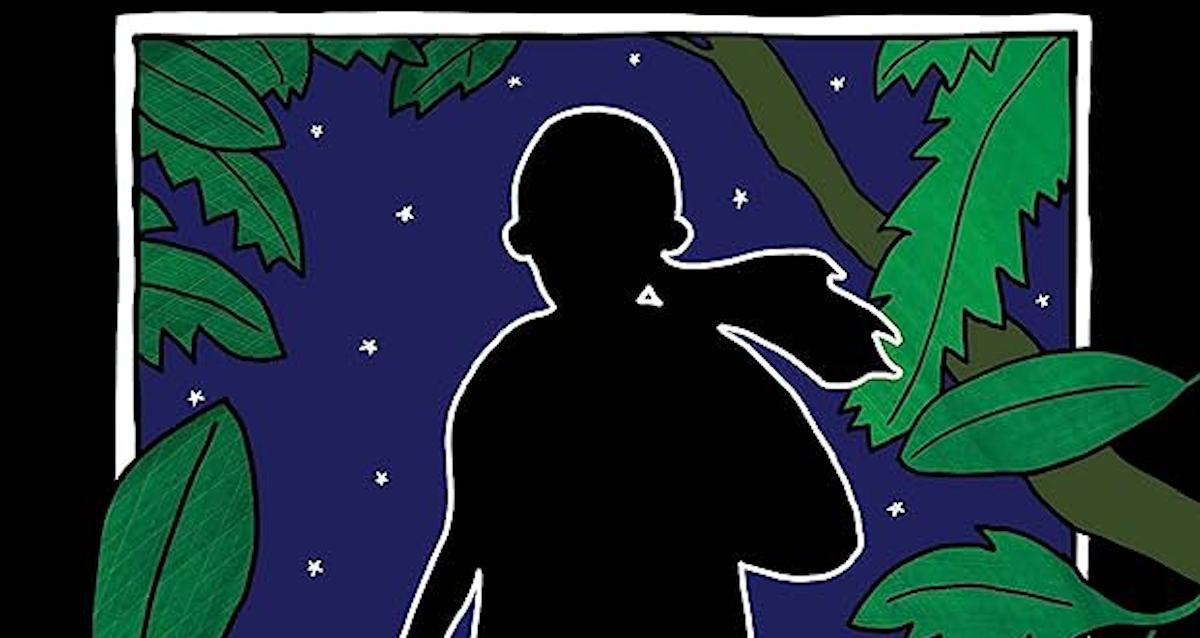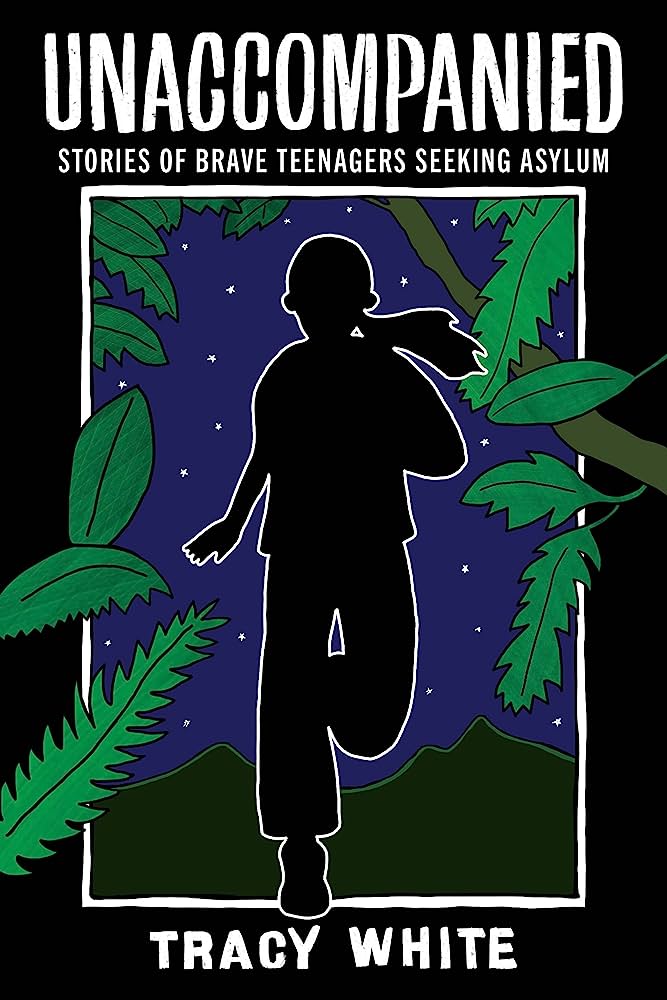June 20th is World Refugee Day. To commemorate the occasion, The Beat is proud to present this interview with Unaccompanied: Stories of Brave Teenagers Seeking Asylum author Tracy White conducted by Liz Frances, founder of activist nonfiction graphic novel publisher Street Noise Books.
LIZ FRANCES: Hi Tracy, I’m so glad to speak with you on June 20th, which is not only the launch date of your new book Unaccompanied: Stories of Brave Teenagers Seeking Asylum, but which the United Nations has declared World Refugee Day.
What motivated you to write a nonfiction graphic novel about young people seeking asylum in the United States?
TRACY WHITE: The children. They are incredibly courageous, strong kids who have families and come from communities with rich histories, but that is not how they are depicted in our media. I was drawn to tell their stories in Unaccompanied because of my previous collaborations with immigration organizations. That’s when I came to understand the importance of changing the immigrant narrative, particularly around unaccompanied minors, in the United States. There is a critical need for a fresh perspective and new language to challenge the media’s pity-driven stories and reductive wording.
FRANCES: How big is this problem? How many unaccompanied refugee minors are currently seeking asylum in the U.S.?
WHITE: There are thousands of children seeking asylum in the United States every year. According to the Unaccompanied Children’s program at the Office of Refugee Resettlement, 128,404 unaccompanied children were referred to the Department of Homeland Security in 2022 alone. This is a very large number, but please understand that the kids who actually get to the U.S. are the lucky few. Most never make it.
FRANCES: Other people have written the true stories of immigrants. But what is it about the comics form that you think makes this book different and perhaps more impactful?
WHITE: Comics are an ideal medium for taking very complex information, boiling it down to its most salient points, and turning it into visually compelling stories that people can relate to. Often information around unaccompanied refugees is buried in statistics and dehumanizing language. It is hard to think of individual people when we hear words in the media like caravans or aliens or illegals. Unaccompanied gives readers a window into specific people, their families, their communities, and their hopes and dreams, not just the terrible moments leading up to the difficult choice to try and reach the United States. These kids are superheroes who have gone through terrible things. They are courageous, they have incredible tenacity, and they need support.
FRANCES: In your book, you tell four different stories of people coming from different countries, how did you choose those particular stories to tell?
WHITE: I chose these stories because, while unique, they are representative of many of the reasons children leave their home countries on their own.
FRANCES: What was the most challenging thing you faced in creating this book?
WHITE: You can walk next to someone, not in their shoes. My challenge in documenting these stories was to truly listen, assume nothing and be curious. Every step of the way I asked myself, have I done enough? Who else can I talk to? What else should I think about? Have I kept my own opinions and ideas out of it all?
These questions led me to global partnerships with folks who had relevant lived experiences and expertise in the stories being told. I developed a process of constant cross-checking and for each person’s story I had at least five people giving me feedback on authenticity and clarity.
FRANCES: This isn’t your first published graphic novel. Your first book was a memoir about your own struggles as a teen. Do you see any connection between your two books?
WHITE: My comics have always focused on the emotions that connect us all, and on seeing teens for who they are. Celebrating their strengths, showing the hard things they experience and being ok with endings that are not clear cut.

FRANCES: And how has your writing style and your art style changed since you created your first book?
WHITE: My first book takes place in a mental hospital and the visual cues get their direction from both the setting and the mood. The lines are thin, there is a lot of white space, simple panel structure and repetition to underscore the emotional feelings and the monotony of a hospital setting.
Unaccompanied takes place in four countries with specific architecture, plant life, clothing, and interior spaces. The lines are thick to stand strong with the detailed backgrounds. Each chapter has at least a couple of panels that clearly depict unique settings to help people get a sense of place and space. The panel layouts are varied and sometimes bleed out to underscore how varied and expansive the stories are. With comics, each visual choice that gets made must be based on the narrative content. That’s why each book’s style is so different.
FRANCES: As a parent of teenagers, how do you think a parent could let their child set out alone on a journey like the ones you describe in your book?
WHITE: Every situation is different. I can’t speak for other parents and their feelings. These are clearly difficult situations with people making the best choices they can. Personally, I believe most parents want the best for their kids and will do anything to keep them safe even if it breaks their hearts.
FRANCES: What kind of an impact do you hope your book might have on people who read it. And what kind of a world would you like to see us moving towards?
WHITE: I would like to move toward a world where children don’t have to experience situations that force them to consider undertaking such dangerous journeys by themselves. I hope readers come away with a better understanding of the strength and hope these individuals needed in order to endure the huge challenges they faced making the journey to the U.S. It’s also essential for people to remember that everyone has the right to seek asylum.
Part of the change will come from shifting the negative narrative, moving away from one of helpless victims toward the reality of brave, strong children from countries with individual cultures and histories, facing down almost impossible odds and dangers. Doing this fosters empathy and understanding so these kids can get the support they need and deserve when seeking asylum in the United States.
The stories in Unaccompanied are stories of humanity. We can relate through the emotions we all share, even though our experiences are different. I believe Unaccompanied could play a role in school curriculums and be used as a jumping off point for discussion around immigration, courage, resilience, colonialism and more. The book appendix includes an extensive guide created by two incredible teachers to help start inquiry. To further support teachers and librarians, I’m excited to have two new workshops around activism and non-fiction comics. More information is available on my website at www.traced.com/workshops.
FRANCES: If people are moved by the stories in your book, are there steps they can take to help, to make a difference in the lives of refugees, especially young asylum seekers?
WHITE: Yes, there are many ways people can help on the local and national level. Several organizations that helped with this book accept donations of money and/or time. Some of these places are NYC focused, some are specific to California and Mexico, and others are national in scope. Please visit my site if you’d like specific some suggestions: www.traced.com/books/
Also, my author’s proceeds go to the organizations I worked with to write this book so buying this book helps kids too.
FRANCES: Thank you so much for your time, Tracy. It is an honor to have worked with you on this book, and I know it will make a difference! Happy Book Birthday!
Unaccompanied: Stories of Brave Teenagers Seeking Asylum is available at a local bookstore or public library near you.













